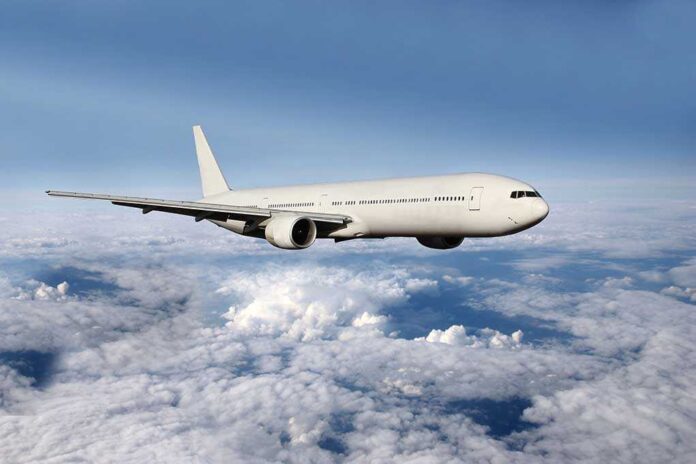
In 2025, holiday travel is set to become a test not just of your patience, but of your financial nerve—because the sticker shock doesn’t stop at your ticket or hotel, but lurks in every leg of the journey and every line on your bill.
Story Snapshot
- Holiday travel costs in 2025 are projected to rise sharply, with dynamic pricing, surging demand, and hidden fees all driving up the bill.
- Most travelers underestimate the cumulative impact of extra costs like airport parking, baggage, rideshare surges, and pet boarding.
- Early booking and careful budgeting are critical strategies for avoiding the worst financial surprises this holiday season.
- The travel industry’s consolidation and focus on ancillary revenue is reshaping the economics of American holidays.
2025 Holiday Travel: The True Cost Behind the Ticket
For millions of Americans, planning a holiday getaway in 2025 feels like navigating an obstacle course with dollar signs at every turn. The sticker price of airfare and hotel rooms is only the beginning. Dynamic pricing has become an industry standard—algorithms now adjust fares and rates in real time, responding to every uptick in demand. The result: travelers see prices skyrocket the moment they hesitate, especially during Thanksgiving, Christmas, and New Year’s. For many, this means the longer you wait, the more you pay—and the difference can be hundreds of dollars per person.
Beyond the big-ticket items, a cascade of hidden expenses awaits. Airport parking is projected to rise another 8-12% during peak weeks, often adding $100 or more to a family’s trip. Checked bag fees, seat selection surcharges, and even onboard snacks now routinely bloat the final bill. Rideshare apps, which once seemed like a convenient cost-cutter, now hit travelers with surge pricing that can double or triple a fare during busy hours. Pet owners face their own dilemma: with boarding rates up and in-home pet care in high demand, leaving Fido behind could rival a night’s stay at a mid-range hotel.
Why Prices Spike—and Who’s Really in Control
The story behind rising costs is rooted in the travel industry’s relentless push for efficiency and profit. Airlines and hotels, battered by the financial turmoil of the early 2020s, have doubled down on dynamic pricing and ancillary fees as reliable sources of revenue. The biggest players—Booking Holdings, Expedia Group, and their stable of brands—dominate the online booking landscape, setting the tone for how inventory and prices are managed nationwide. While technology makes price comparison easier for consumers, it also arms providers with ever more sophisticated tools to squeeze every possible dollar from surging holiday demand.
This consolidation means consumers face an uneven playing field. Airlines and hotels control the base rates, but it’s the web of extras that can turn a “deal” into a budget-buster. Ancillary revenue streams—from baggage to parking—now make up a significant share of total travel income. Industry analysts project that by the end of 2025, these extras will account for nearly a third of airline earnings, and a growing portion of hotel profits. For families and groups, especially those on tight budgets, these incremental costs can make or break the feasibility of a holiday trip.
Planning Ahead: Outsmarting the Holiday Price Surge
Data from AAA and travel tech firms like Google Flights and Hopper converge on one key point: timing is everything. Booking your flight or hotel about two months in advance still offers the best shot at a reasonable rate, especially if you can fly on less-popular days. Flexibility pays off; travelers who can avoid peak departure dates, like December 22, will dodge the worst congestion and price hikes. For drivers, gas prices have stabilized, but severe metro area congestion threatens to offset any savings with hours lost on the road.
Expert advice in 2025 is blunt: scrutinize every line of your itinerary. Budget for the extras, from parking to pet care. If you plan to check bags or select seats, add those costs to your calculations—don’t assume the headline fare tells the whole story. Consider alternative modes of travel; for shorter trips or larger groups, driving or even taking the train may prove more cost-effective after accounting for all the hidden fees. Early planning and flexibility in travel dates are your best defenses against the holiday price gauntlet.
Winners, Losers, and What’s Next for American Holiday Travel
The rapid rise in holiday travel costs has real consequences. For the travel industry, robust demand translates to record revenues and continued consolidation of market power. For consumers—especially families and lower-income groups—the financial barrier to travel grows taller every year. The social impact is subtle but profound: fewer people able to gather with loved ones, cherished traditions put on pause, and greater inequality in who can afford to travel when it matters most.
Calls for greater transparency around ancillary fees are growing louder. Consumer advocates argue that dynamic pricing, while economically rational, deepens unpredictability and disadvantage for those least able to absorb last-minute shocks. Industry leaders counter that these tools enable more efficient allocation of resources and better service during peak periods. With political scrutiny mounting, especially around hidden fees and price volatility, the next few years may see new regulations—or at least more public debate—about the true cost of keeping holiday traditions alive.
Sources:
TravelPulse: 2025 Travel Weekly Power List: The Biggest Sellers in Travel
Google Blog: Holiday travel trends for 2025
InsideHook: Holiday Travel Predictions 2025















